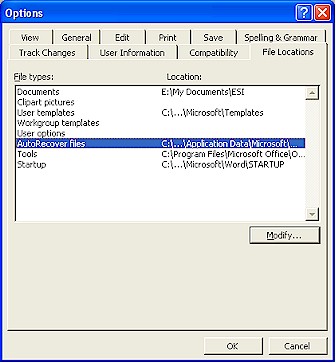Monthly publication
December 2001 Issue
![]()
A Boardwork And Note Formatting Model For Learning Mathematics Coursework Using Writing | |
*~*~*~*~*~*~*~*~*
![]()
Welcome to the LCN
 Welcome
to the December issue. Do you believe
2001 is almost over! Appropriately, this issue features
an end-of-semester recommendation from Frank Christ. If you need to hire
SI leaders for the next semester, Barbara
Stout and Jeanne Wiatr give you some excellent tips in their Supplemental
Instruction article. Interested in more info on SQ3R? Check out Susan Palau's
web site review. As a special treat this month, Dennis H. Congos and David W. Bain
share with us their research in the area of learning mathematics coursework
using writing.
Welcome
to the December issue. Do you believe
2001 is almost over! Appropriately, this issue features
an end-of-semester recommendation from Frank Christ. If you need to hire
SI leaders for the next semester, Barbara
Stout and Jeanne Wiatr give you some excellent tips in their Supplemental
Instruction article. Interested in more info on SQ3R? Check out Susan Palau's
web site review. As a special treat this month, Dennis H. Congos and David W. Bain
share with us their research in the area of learning mathematics coursework
using writing.
The articles in this newsletter are brought to you by dedicated learning centers professionals who take the time out from their busy schedules to share their knowledge and experience with you. Show them your appreciation by dropping them a note and tell them how their contributions are helping you. You will find the email address of each contributor at the top of his column.
Do you have something to share with your colleagues? We are happy to publish your article on issues related to learning centers. This newsletter has over 500 subscribers in learning centers and is an excellent medium to share your knowledge and expertise with your colleagues. Since we have subscribers from all over the US, you can even say that your article was featured in a national publication. See the submission guidelines by clicking here.
Enjoy the new issue, and don't forget to share it with your colleagues.
Mon Nasser Editor*~*~*~*~*~*~*~*~*
![]()
 Management Strategies & Tips
Management Strategies & Tips
By Frank L. Christ
Email: flchris@mindspring.com
Tip #17: End of Semester Recommendations
Next month, January, marks the beginning of the Spring semester. Here are some management ideas to consider as you end the Fall semester and before you begin the Spring semester.
|
Review your annual goals and objectives document to determine which of your Fall goals and objectives you have achieved and which you have not. | |
|
Schedule a half-day staff retreat to review your findings. | |
|
If you are not using some type of Management by Objectives system and are interested in knowing more about it, read Using MBO to Create, Develop, Improve, and Sustain Learning Assistance Programs. It just might increase your center's accountability, program visibility, and campus recognition. | |
|
Based on what you have learned about your center's performance in the past semester, plan your management activities for the coming semester. | |
|
When planning management objectives, remember to identify tasks, a completion date, budget, materials, and personnel, and a staff member responsible to reach the stated objective. | |
|
Make a time available at spring semester staff meetings for program review so you can immediately remedy any problems as they occur. | |
|
Insure that you involve your entire staff in these activities. | |
|
As you identify past semester problems, consider what assistance is available to you to minimize or eliminate these problems in the future. Remember that everyone at your institution -- an institution that employs many talented faculty and administrators -- is a potential consultant accessible and free. | |
|
Keep a record of your retreat activities and discussions with an emphasis on "next steps." |
The Socratic adage about the "unexamined life" is also applicable to management. The unexamined mission, goals, and objectives of a learning support center are not worth writing -- if not lived.
*~*~*~*~*~*~*~*~*
![]()
Supplemental
Instruction (SI)
More
on Recruiting
SI Leaders (5th
in series)
By Barbara Stout
and Jeanne
Wiatr, former SI Supervisors,
University of Pittsburgh
Email: bstout06@home.com
and jeannewiatr@yahoo.com
Those students you select to provide Supplemental Instruction to your campus are also representatives of your learning center and therefore need to
be selected with care. The screening process is worth carefully developing as selection of strong candidates will only make training more focused.
Some view the training process as their chance to evaluate the qualifications of individuals for SI leadership. We viewed training as too critical to our quality control to impose the burden of screening candidates. Our intention was to train only the strongest candidates making it easier to recognize any weaknesses potential leaders might have in the field. Although candidates might look good on paper and as a result of recommendations, there is much to be discovered about the students as you train them to provide SI and represent your program. We always depended on recommendations of our faculty to identify good potential applicants. In addition to that resource, we also followed-up on the self-referrals taken from the student surveys conducted at the end of each term and from recommendations of our leaders who identified strong
possibilities from their SI session groups. This pool of applicants was a great place to start the selection process.
Originally we used the application outlined in the SI Supervisor manual and gradually adapted it to suit our needs as we developed our screening process. We found that many students choose to apply online once that was developed. The application asked for the standard job information, contactable references and a couple of narrative questions that gave some insight to the applicant as well as a writing sample. References were contacted and interviewed as to their relationship with the applicant and impressions of how the student would work with faculty and peers according to the SI model. If we felt the applicant was one we wanted to
pursue, after checking references, we invited them in for an interview. In our situation there were two supervisors and we used this to our advantage. One supervisor started the process by reviewing the SI model with the applicant. The other supervisor posed thought provoking questions looking for insights to the study process, attitude toward struggling students, and reflections about the SI model. Students were also asked about their contact with SI in their classes. Although there is an advantage to having multiple interviewers one person could develop layers of the interview process to create a similar effect. If an applicant passed through this scrutiny we generally approved them as candidates for SI training.
Qualities we looked for in filling these leadership positions included much more than a grade point average and a good "rap" from a friendly professor. There were instances where an "A" student with great recommendations from the professor concerning content competency were turned down because the interview process revealed that they simply didn't have the people skills necessary to work with a broad range of students. On the other hand, we accepted applicants who were "B" students. They often had a greater insight to the struggle that was necessary to do well in a difficult class. In order to facilitate a good SI session it is important to be able to help people work for their grade. We wanted leaders that understood that the process of learning was as important as the final grade. The ability to reach people was as critical as understanding material to be mastered in an SI session. Appreciating the challenge a course might pose for some is something that can't be taught, but can be assessed in a good screening process.
As we processed candidates for training it was clear the more attention paid to selecting a good match to the SI model the more successful the training experience. Front loading the effort resulted in fewer wash-outs from the training program. Strong candidates allowed training to focus on the meat of the model and enrich the experience for the students. Recruiting the right people allowed for the greatest benefit of training. This holds true whether you run an intensive two-day orientation or have
students complete a credited course. The development of a successful interview process will greatly enhance an institutions SI program.
*~*~*~*~*~*~*~*~*
![]()
Internet Resource of the Month
 By
Susan Marcus Palau
By
Susan Marcus PalauDirector, Learning Center, Purchase College/SUNY
Email: Susan.Palau@Purchase.edu
SQ3R at CSB/ SJU Web Site
Following the suggestion in the appendix to an article in the Fall 2001 issue of Journal of College Reading and Learning, I decided to visit the website of the College of Saint Benedict/Saint John's University to look for a copy of user friendly instructions for the SQ3R study formula. Francis P. Robinson created the SQ3R textbook studying method in 1941. Since that time, many other studying methods have been created, but most of them are just a derivation of this original. Following is a brief summary of the description of the SQ3R method given at the CSB/SJU website:
1. Survey - briefly skim over the main features of the chapter, i.e., headings, subheadings, graphic aids, end of chapter summaries and questions.
2. Question - turn each heading and subheading into a 5W type question - who, what, where, when, why, (how).
3. Read from heading to heading, one section at a time. After the first reading, you should take notes, highlight or underline the text or make margin summaries.
4. Recite, without referring to the text, the main facts from the selection you just read. Check your memory. If you are satisfied that you recall what you have just read, go to the next heading or subheading and repeat Steps 2 to 4. If you did not remember the major details, re-do Steps 2-4 on the same section. Do Steps 2-4 until you finish the chapter.
5. Review - the information leaned in the chapter . Look at the heading questions and see if you can remember the main points. Do this daily for a few minutes each day.
The College of Saint Benedict/Saint John's University website can be found at www.csbsju.edu. Once you have entered the home page, it may be best to use "Search" to find the SQ3R method instructions. Otherwise, go to "Academic Advising" and you will find a list of 19 links covering most of the other study areas. What was a little unusual here was that 3 of the links bring you to Dartmouth University, The University of California, Berkeley, and Virgin Tech study skill sites. I was disappointed that I got an error message when trying to visit Berkeley, however.
The article in which I found this web site is entitled, "How to Create and Use PowerPoint Presentations to Teach Reading Skills", by JoAnn Yaworski. It details a smashing lesson for using PowerPoint to teach the SQ3R study method in a multi-sensory way. Reading this article in conjunction with visiting the website is a good use of your time.
Susan Marcus Palau
(Beside my job as Director of the Learning Center and writing this column, I have started my own organization to help the refugee babies and children of Afghanistan. If you knit or someone you know knits, please visit me at www.specialknittingforces.org. Thanks!)
*~*~*~*~*~*~*~*~*
![]()
A Boardwork And Note Formatting Model For Learning
Mathematics Coursework Using Writing
By Dennis H. Congos and David W. Bain
 Abstract
Abstract
Well-written and well-organized board work for
teaching solutions to various math problems is very helpful to learners trying
to understand how to solve math problems. This article presents a model for
teaching math that illustrates the value of using writing within a step-by-step
approach to help students understand and learn math solutions. The model also
includes a method for presenting quantitative course content that accommodates
the strengths of learners with primary verbal learning abilities as well as
those with primary quantitative learning abilities.
A Boardwork And Note Formatting Model For Learning Mathematics Coursework Using Writing
The decline in the state of mathematics
education in the U. S. compared to other nations was documented by McKnight and
others in 1987 (McKnight and others, 1987).
The National Research Council expressed its concern in 1989 with a call
to improve the ways children learn math (1989).
As a suggestion for better math education, Garfolo proposed creating an
atmosphere where the math classroom must focus on making sense and creating
meaningful understanding when students attempt to understand and learn how to
solve math problems. (Garfolo, 1994). The
National Council of Teacher’s of Mathematics in their standards for school
math emphasizes the need for using oral and writing skills to clarify thinking
and understanding about math ideas and relationships (1987).
Many math instructors are not aware of the fact
that there are learners with primary verbal learning abilities as well as
primary quantitative learning abilities. Because
of habit, training, or assumptions about learning many math instructors
typically teach to the learner with primary quantitative abilities.
It is normal for verbal learners to have difficulty understanding and
assimilating material presented in quantitative language (numbers, letters, and
symbols) just as quantitative learners find verbal courses (psychology, history,
sociology) more challenging. To
speed the learning of math, there are many benefits to including writing to
promote the understanding of solutions to math problems especially for learners
with well-developed verbal learning abilities.
Writing in math is directly related to solving math problems (National
Council of Teachers of Mathematics, 1989).
It encourages clearer thinking of mathematical ideas and processes, and
more quickly reveals the level of understanding among learners (Miller, 1991).
The model below presents a simple format for
organizing math lecture and textbook material that includes the beneficial
element of writing. This model speeds learning, facilitates identification of
incomplete or incorrect understandings in solutions, and signals when and where
help is needed before a test is taken when something can still be done about it.
Presented below are the steps for implementing
this board work model. This model
allows for presenting and formatting math problems and solutions so that both
quantitative and verbal learners can use their strengths whether it lies in
quantitative or verbal abilities to understand and learn mathematics.
For instructors, teaching assistants, tutors,
or Supplemental Instruction (SI) leaders the procedure for setting up math
problems and solutions on the chalkboard is as follows:
Step 1: Divide the
chalkboard into 4 equal sections.
Step 2: In section 1,
write down relevant prerequisites for solving this type of problem.
Step 2: In section 2,
model a solution step-by-step by explaining what is done for each step as the
steps are recorded on the board. Indicate
the source of answers. This is
important because it is answers to problems that tell learners if solutions are
correct. Without the ability to
verify answers, there is a greater risk that incorrect or incomplete solutions
may be learned or frustration may cause learners to give up.
This is especially so if learners are working on their own, away from
immediate resources for assistance such as tutors, instructors, or classmates
Step 3: In section 3,
using short phrases, write the words for what is done in each step from section
2. This narration becomes the rules for solving this type of math problem in the
future. When finished, ask for
questions and be ready to explain what is done and why for each step in the
solution. This promotes understanding and is especially useful to learners with
marginally developed quantitative abilities and well-developed verbal learning
abilities. Allow learners to ask
questions to increase or to check understanding. The written rules can then be used for solving other similar
problems. For example, when a
learner knows the rules for multiplying fraction problems, s/he is able to solve
an unlimited number of problems of this type.
Step 4: In section 4, when there are no more questions, record a similar problem for learners to practice and to check for understanding. If they get stuck, they are now armed with prerequisites, a model of a solution, written rules for a solution, and the knowledge of instructors, tutors, SI leaders, and/or collaborating peers. When learners finish the practice problem, the instructor, tutor, SI leader or another learner writes each step of a solution on the board as it is dictated or a learner may come to the board to present a solution, step-by-step. The person offering a solution should explain: (1) what is done in each step, (2) why it is done that way and (3) how to verify that they have the right answer.
[Download the whole article in MS Word format by clicking here, or download a zipped version by clicking here]
*~*~*~*~*~*~*~*~*
![]()
From our sponsor
Version 6.20 of AccuTrack

AccuTrack is specialized database software designed for learning centers. The software has many uses, including attendance tracking, appointment scheduling, demographics reporting, traffic analysis, feedback collection, tracking loaned materials, and more.
Version 6.2 of AccuTrack was just released. This version allows you to query demographics data. For example, you can find out how many visitors you had during a certain time period that were freshmen from the college of business and not out of state. Of course the actual queries depends on your demographics questions, which you can setup yourself.
Version 6.2 is now shipping to all new customers. This version is offered as a complementary upgrade to all AccuTrack 6.0 customers . In fact, we have been providing our AccuTrack 6.0 customers with complementary upgrades this whole year.
If you are not yet an AccuTrack user, this is a great time to check it out. Act now and you could have the software up and running at your center by the beginning of the Spring semester. Get AccuTrack and make this semester the last one where you have to do extensive manual data tabulations to figure out the usage statistics for your grants.
Visit our web site and download a free 30-day evaluation version today. The address is http://www.accutrack.org
*~*~*~*~*~*~*~*~*
![]()
Conferences
 Technology Tools for Teaching and
Learning Conference
Technology Tools for Teaching and
Learning Conference
December
9 - 12, 2001
San Juan, Puerto Rico
This conference will explore how technology can be used to effectively assist low-income and underserved students preparing for postsecondary opportunities.
For further information or questions, please contact Carmen Torres at 973-484-7554 or ctorres@nj.aspira.org.
*~*~*~*~*~*~*~*~*
2002 First-Year Experience Conference-West
January 9-12, 2002
San Francisco, California
http://www.sc.edu/fye/conferences/west/fyewest.html
*~*~*~*~*~*~*~*~*
21st Annual Conference on The First-Year Experience -
East
February 15-19, 2002
Orlando, FL
http://www.sc.edu/fye/conferences/annual/fyeannual.html
*~*~*~*~*~*~*~*~*
NADE National Conference
March 6-10, 2002
Orlando, FL
Each year the National Association for Developmental Education (NADE) offers a national conference that attracts over 1,400 educators from across the U.S. In addition to nationally-known plenary speakers, nearly 200 concurrent sessions provide a comprehensive treatment of developmental education issues.
http://www.freenet.tlh.fl.us/FDEA/NADE2K2/
*~*~*~*~*~*~*~*~*
NEOA Conference
April 7th-April 10th, 2002
Westbrook, Connecticut.
Visit http://www.neoaonline.org to learn more about the New England Educational Opportunity Association (NEOA)..
*~*~*~*~*~*~*~*~*
NYCLSA's 25th Annual Symposium
April 7-9, 2002.
Corning, NY.
NYCLSA is the NY state chapter of NADE. For more info about the annual symposium, visit http://www.rit.edu/~jwsldc/NYCLSA/general_info/annual_conference/2000.shtml
*~*~*~*~*~*~*~*~*
PA/NJ Regional Chapter of the CRLA
April 11&12, 2002
New Brunswick, NJ
For More Information, Contact: Pat Grove pgrove@rci.rutgers.edu
*~*~*~*~*~*~*~*~*
NYSMATYC Annual Conference
April 12-14, 2002
For more info on the New York State Mathematics Association of Two Year Colleges conference, visit:
http://www2.sunysuffolk.edu/ogradym/2002nysmatyc.html
*~*~*~*~*~*~*~*~*
NTA 9th Annual Conference
April 21-24, 2001
Las Vegas, Nevada
The National Tutoring Association (NTA) conference provides the latest in tutor information, training, and the opportunity to network with other tutors and administrators. For more information visit the NTA's web site at:
*~*~*~*~*~*~*~*~*
2nd SI / VSI Conference
June 6-8, 2002.
Kansas City
http://www.umkc.edu/cad/SI/siconf/natconf.htm
*~*~*~*~*~*~*~*~*
Let us know about conferences not listed here by emailing lcn@attendance-tracking.com
*~*~*~*~*~*~*~*~*
![]()
Windows Tip of the Month

Windows XP, should you upgrade?
In October the long awaited and highly hyped Windows XP was launched. This was the first time I was eagerly waiting for the release of a Windows product. I had read many positive reviews about the latest OS from Microsoft, and also wanted to get rid of my ailing Windows ME system.
But first some background. About a year ago I upgraded my computer from Windows 98 to ME (Millennium Edition). That turned out to be a mistake. ME seemed to be something Microsoft (MS) came up with only to generate more sales. Before making the upgrade I read that ME was "Windows 98 + all the fix packs". Unfortunately I found out later that it would be more accurate to add to that "minus many advanced features". ME seems to have been created for the novice user as it didn't provide much control over its environment. In addition, ME was not very stable and locks ups were a daily event.
One solution to the ME problem was Windows 2000. As you might know, 2000 was the successor to Windows NT, a decent operating system known for its stability and maturity. MS marketed Windows NT / 2000 as the "business" operating system, while Windows 95/98/ME were marketed as the "home user" operating systems. Since my home user option sucked, my next option was Windows 2000. However, 2000 did not support as many hardware options as 98 did and was a relatively expensive upgrade ($200 vs $90 for ME).
With Windows XP, Microsoft is now using the same engine for its home and business markets. XP is based on the Windows NT / 2000 engine, so it inherits 2000 stability and maturity, and some Windows 98 wide hardware compatibility. Add to this a slew of new features, and you have one great operating system at the bargain upgrade price of only $99 for the home edition. MS also offers another more expensive flavor of XP called the "Pro" version, but this has "advanced" features that I doubt any average user will need.
So what do I like about XP?
[Please click here to read the rest of this article]
*~*~*~*~*~*~*~*~*
![]()
 MS
Word Tip of the Month
MS
Word Tip of the Month
Recovering Documents After Crashes
You are working hard on your Word document, and suddenly it happens: you have a power failure or Windows freezes, and your document is gone! What do you do know?
First to preserve sanity, get into the habit of saving your work every few minutes. This way if you run into the above situation, the most you will lose is a few minutes worth of work.
In some cases Word will detect the outage and will load a saved copy of the document for you. However, this copy will have a different name from what you were using, so it is important that you save it under a different name before you close it. Make sure that this copy is is up-to-date, and if it is newer than your last saved copy of the document, use it instead of the other one.
Now since you're going to be saving your work every few minutes, this won't happen to you, but what if some desperate student comes to you crying because his computer crashed while typing his term paper. The paper is due in ten minutes, and he has not saved a copy in the past few hours? Well there is still a chance to recover. Here is how:
-
In Word, click on "Tools" then "Options"
-
Click on the "File Locations" tab.
-
Look for the "AutoRecover" line and read the path. If the path is too long click on it then click on "Modify" to see the whole path. Make sure you don't actually change this path while doing this.
-
Launch Windows Explorer and browse to the AutoRecover path you got above.
-
In explorer click on "View" then "Details", and click on the "Date Modified" header to sort files chronologically.
-
Look at the latest file in this folder and check its last modified date and time. There is a good chance this is the file you need to recover. Simply double click on it to load it in Word.
-
Check the file, and if it is what you want, save it under a different name.


*~*~*~*~*~*~*~*~*
![]()
On the Lighter Side
 Math
Jokes
Math
Jokes
I failed every subject except for algebra.
How did you keep from failing that?
I didn't take it!
Are you good at math?
Yes and no
What do you mean?
Yes, I'm no good at math!
Dad, can you help me find the lowest common denominator in this problem please?
Don't tell me that they haven't found it yet, I remember looking for it when I was a boy!
Did you parents help you with these homework problems?
No I got them all wrong by myself!
I can't solve this problem.
Any five year old should be able to solve this one.
No wonder I can't do it then, I'm nearly ten!
What's 2 and 2
4
That's good
Good?, that's perfect!
If 1+1=2 and 2+2=4, what is 4+4?
That's not fair you answer the easy ones and leave us with the hard one!
How much is half of 8
Up and down or across?
What do you mean?
Well, up and down makes a 3 or across the middle leaves a 0.
Now class, whatever I ask, I want you to all answer at once. How much is six plus 4 ?
At once!
If there are ten cats in a boat and one jumps out, how many are left ?
None, they were all copycats!
*~*~*~*~*~*~*~*~*
Have better jokes? Email them to us at lcn@accutrack.org
*~*~*~*~*~*~*~*~*
![]()
Quotes

"You cannot teach a man anything; you can only help him find it within himself."
- Galileo Galilei
*~*~*~*~*~*~*~*~*
"Education: Being able to differentiate between what you do know and what you
don't. It's knowing where to go to find out what you need to know; and it's knowing how to use the information once you get it."
- William Feather
*~*~*~*~*~*~*~*~*
"Intellectual growth should commence at birth and cease only at death."
- Albert Einstein
*~*~*~*~*~*~*~*~*
"Training is everything. The peach was once a bitter almond; cauliflower is nothing but cabbage with a college education."
- Mark Twain
*~*~*~*~*~*~*~*~*
"Our progress as a nation can be no swifter than our progress in education."
- John F. Kennedy
*~*~*~*~*~*~*~*~*
"Education is a social process...Education is growth...Education is, not a preparation for life; Education is life itself."
- John Dewey
*~*~*~*~*~*~*~*~*
"Knowledge is the only instrument of production that is not subject to diminishing returns.
"
- J.M. Clarke
*~*~*~*~*~*~*~*~*
"Our greatest natural resource is the minds of our children."
- Walt Disney
*~*~*~*~*~*~*~*~*
". . . whenever in all his history Man has asked the right question, he has found the answer."
- Margaret Mead
*~*~*~*~*~*~*~*~*
![]()
 Last Issue
Last Issue
The November issue of the Learning Center Newsletter featured:
| A management tip by Frank Christ on the "LAC War Room". | |
| A review of a speed reading web site by Susan Marcus Palau. | |
| Training SI leaders by Jeanne Wiatr and Barbara Stout. | |
| Online graduate course for learning support center personnel. | |
| Powerful Windows NotePad replacement software.. |
| And more. |
To view the November issue, click here.
*~*~*~*~*~*~*~*~*
![]()
Submissions
Guidelines
Get involved in the learning-assistance community via The Learning Center Newsletter by:
|
Submitting articles of interest to learning-assistance professionals. | |
|
Reviewing books and other learning-assistance resources. | |
|
Informing us about conferences and other happenings. | |
Nominating your favorite learning center professional for the Person of the Month column. | |
|
Sharing resource information with your peers: web sites, publications, etc. |
The average article length is one page written in 12 points size and single line spacing. If the article is long, we might put it in a separate page and show the first few paragraphs in the newsletter with a link to the full article. Send your articles in ASCII text or MS Word format. We will take care of the html conversion. If you want to include images with the article, the preferred format is jpg or gif, but we will convert images in other formats if needed.
The
newsletter is usually released during the first week of each month. The
deadline for each issue is the 27th of the
previous month, so if you would like to submit an article for the next
issue, we need to receive it by the 27th of this month. By submitting articles, you give us the right to
publish and edit them if needed. The
subject of submitted articles must be
Submitting your article will make you more famous and will help your colleagues worldwide! E-mail your submissions to:
newsletter@attendance-tracking.com
*~*~*~*~*~*~*~*~*
![]()
Feedback
 We certainly hope you find this
newsletter useful and entertaining. We
welcome your suggestions and improvements ideas. To send in your comments, simply
click here.
We certainly hope you find this
newsletter useful and entertaining. We
welcome your suggestions and improvements ideas. To send in your comments, simply
click here.
*~*~*~*~*~*~*~*~*
![]()
 About the Authors
About the Authors
This newsletter is sponsored by AccuTrack and edited by Mon Nasser from Engineerica Systems, Inc. My thanks to this month's contributors: Frank Christ, Susan Marcus Palau, Barbara Stout, Jeanne Wiatr, Dennis Congos and David Bain.
*~*~*~*~*~*~*~*~*
![]()
 Subscribe / Unsubscribe
Info
Subscribe / Unsubscribe
Info
Subscription to The Learning Center Newsletter is free for learning-assistance professionals. To subscribe simply fill-in the quick subscription form at this web site:
http://www.attendance-tracking.com/join_lcn.htm
Only those who subscribe to The Learning Center Newsletter receive notifications of new issues . If you wish to unsubscribe, e-mail to:
unsubscribe@attendance-tracking.com
Note that the process of tracking members and emailing them is currently handled by humans. If there is an error in your subscription, please email us.
*~*~*~*~*~*~*~*~*
